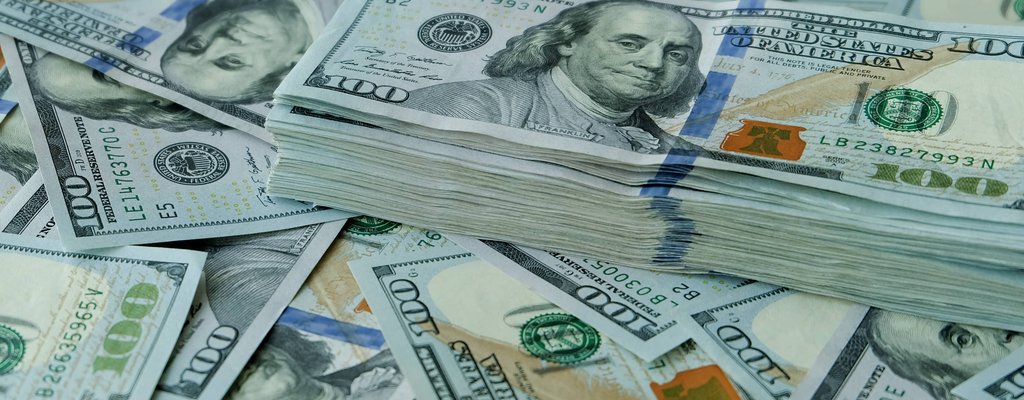What is De-Dollarization?
In March of 2022, only a few weeks after the US imposed its first trade sanctions on Russia, The Wall Street Journal reported that Saudi Arabia was talking to China about selling it oil in Chinese yuan.
At first glance, these two events may seem innocuously unrelated, but they are connected by one key fact: both call into question the position of the US dollar as the standard forex trading currency in the international monetary system.
US sanctions against Russia in February 2022 forced Russia to demand the sale of gas and oil to its global customers in its own currency, the ruble, while China’s new status as the world’s largest trading partner got it a seat at the Saudi table, with demands to buy Saudi oil in Chinese yuan instead of US dollars.
This move towards trading in commodities like oil and gas in national currencies and away from US dollars is more commonly known as de-dollarization.
But why did the world begin trading in US dollars at all?
How did the US dollar become the world’s standard trading and reserve currency?
After the Second World War, the US emerged as the world’s strongest economy, having not only defeated the Axis powers but also boosted its internal economic strength through the war machine, oil and gold.
However, there would be two key events that would cement the US dollar at the heart of global trade and finance.
The first was a decision made in July of 1944, known as the Bretton Woods Agreement, by a group of powerful US bankers, politicians and economists to link the US dollar directly to gold at $35 per ounce. Based on the country’s large gold reserves, this essentially allowed the US to print money on demand.
The second, and perhaps more significant, development was a 1945 agreement with King Ibn Sa’ud of Saudi Arabia, the country with the largest oil reserves in the world. With the globe’s dependence on oil growing exponentially after the war, US President Franklin D. Roosevelt struck a deal with Ibn Sa’ud for Saudi Arabia to sell its oil to the world in US dollars. In exchange, the US would provide military protection to the Al Saud family but – interestingly – not to Saudi Arabia itself.
This meant that if you were a country that needed to import oil from America or Saudi Arabia, the two largest producers of crude oil at the time, you needed US dollars. To earn US dollars, you would need to sell your exports in US dollars and build up your reserves of the currency. And thus began the proliferation of the US dollar throughout the world, eventually establishing it as the standard for international trade and national reserves.
Which countries are dumping the US dollar and will the US dollar be replaced?
Fast-forward 70 odd years, and we are starting to see what modern economists call de-dollarization. Characterizing it in real terms as a dumping of the US dollar would be a bit hyperbolic. But it is happening bit by bit.
Similarly, as evidenced by the rise of the US dollar in the second half of the 20th century, replacing it would probably require a systemic shift in the economic world order. This is not unlike what happened in Europe with the introduction of the euro. Even then, as past experience with the British pound has taught us, it would likely take decades for the US dollar to be unseated as the primary reserve and trading currency.
Still, de-dollarization is happening, albeit very slowly and not in the way we would expect it to. Unlike when the US engineered the dominance of its currency across the world, we are seeing slight movements towards more diversity in forex trading reserves. According to the US Federal Reserve Bank, the US dollar made up more than 70% of all forex trading reserves in 1999, but that proportion has dropped to around 60% in the past year.
This small displacement of the dollar wasn’t by a single currency. Instead, it came from a diverse selection of national currencies. This is not so much the result of a cataclysmic world-changing event so much as a slow shift in trading relationships to more bilateral and multilateral non-US dollar-based transactions.
An example of this would be the economic collaboration between the BRICS countries – made up of Brazil, Russia, India, China and South Africa. Some BRICS countries are making moves to trade in national currencies to reduce the dependency on the US dollar and shore up the currencies of the BRICS trading partners.
Is Russia moving away from the dollar?
More recently, Russia and China have taken a more aggressive stance against the US dollar. Russia’s military action in Ukraine served to polarize the world and provoked the US and its allies to respond through economic sanctions. Indeed, it wasn’t long before we began to see ‘Russia drops US dollar’-type headlines in the news. And in turn, the country forced many of its trading partners to dump the US dollar for rubles if they needed to buy Russian gas and oil.
China on the other hand, through its global economic expansion, has overtaken the US as the world’s largest trading partner and is using its considerable might to increase yuan reserves among its trading partners. While still a small player on the global stage, the Chinese yuan went from under 1% of foreign exchange reserves in 1999 to 2.4% in 2021, and that upward trend could well continue – or even gather pace.
But is this enough to make the US dollar crash and will the US lose the world-currency status it has enjoyed for over 70 years to date?
The answer is no – for now.
What does de-dollarization mean for forex traders in the near future?
As a trader, understanding the trends in currency fluctuations and pairings is fundamental to success. Yet, for the past 70 years or so, using the US dollar as a base currency has made it relatively simple for forex traders and brokerages to manage their positions and risk, respectively.
De-dollarization, if only conceptually, will add complexity to analysis and potentially increase risk. The flip side of this is that the market will be far more open and should increase opportunities for massive upsides.
Today, there is little need for alarm as the US dollar is still firmly entrenched as the world currency and is not likely to be replaced any time soon.
Try your hand at trading with OANDA
Interested in trading the Dollar and other major currency pairs? Learn how to trade as a forex trader.
To try your hand at forex trading and experiment with the possibility of a de-dollarized market, apply for a demo forex account at oanda.com.
Disclaimer
This article is for general information purposes only. It is not investment advice or a solution to buy or sell instruments. Opinions are the authors; not necessarily that of OANDA Corporation or any of its affiliates, subsidiaries, officers or directors. Leveraged trading is high risk. Losses can exceed deposits.


